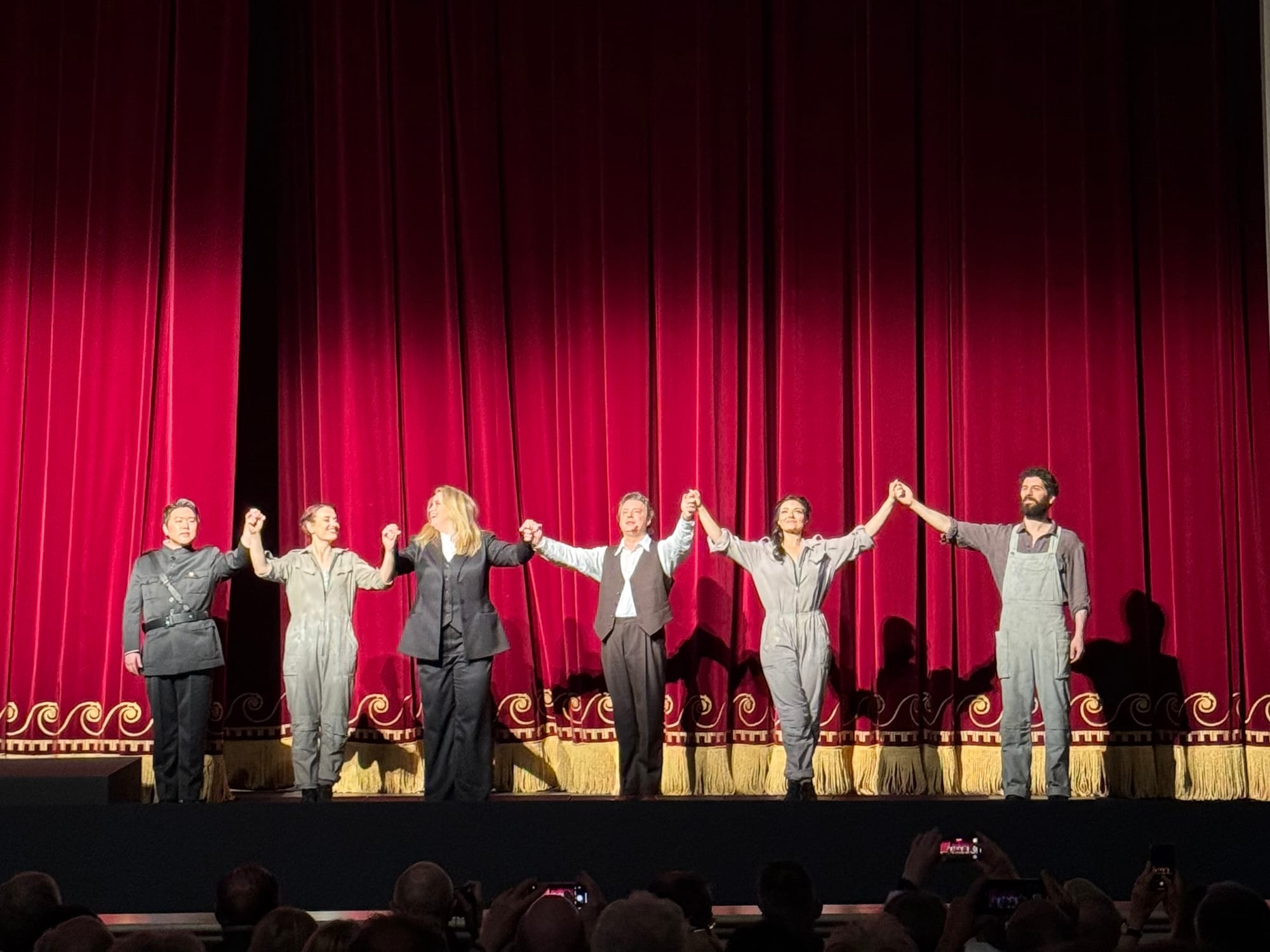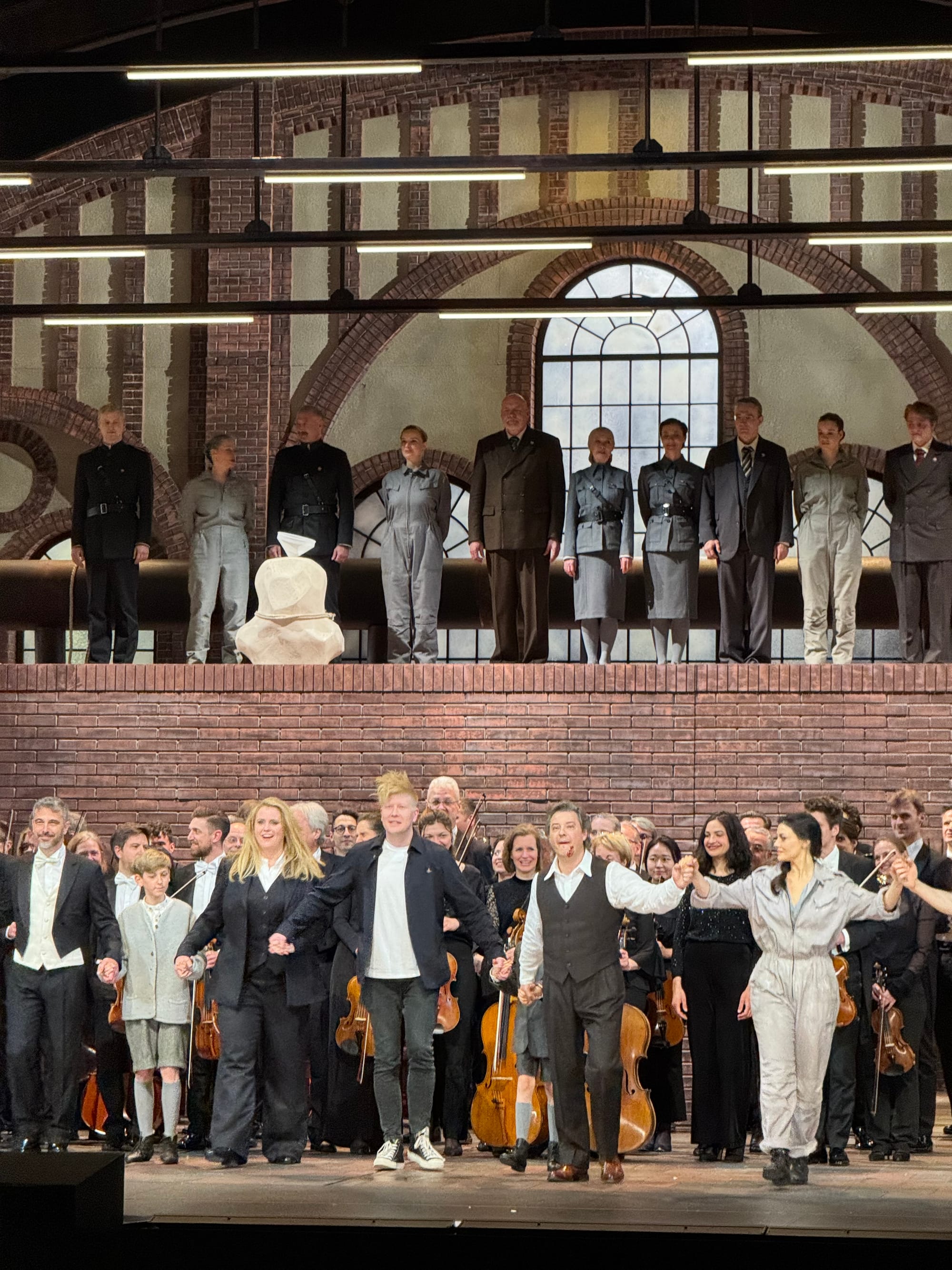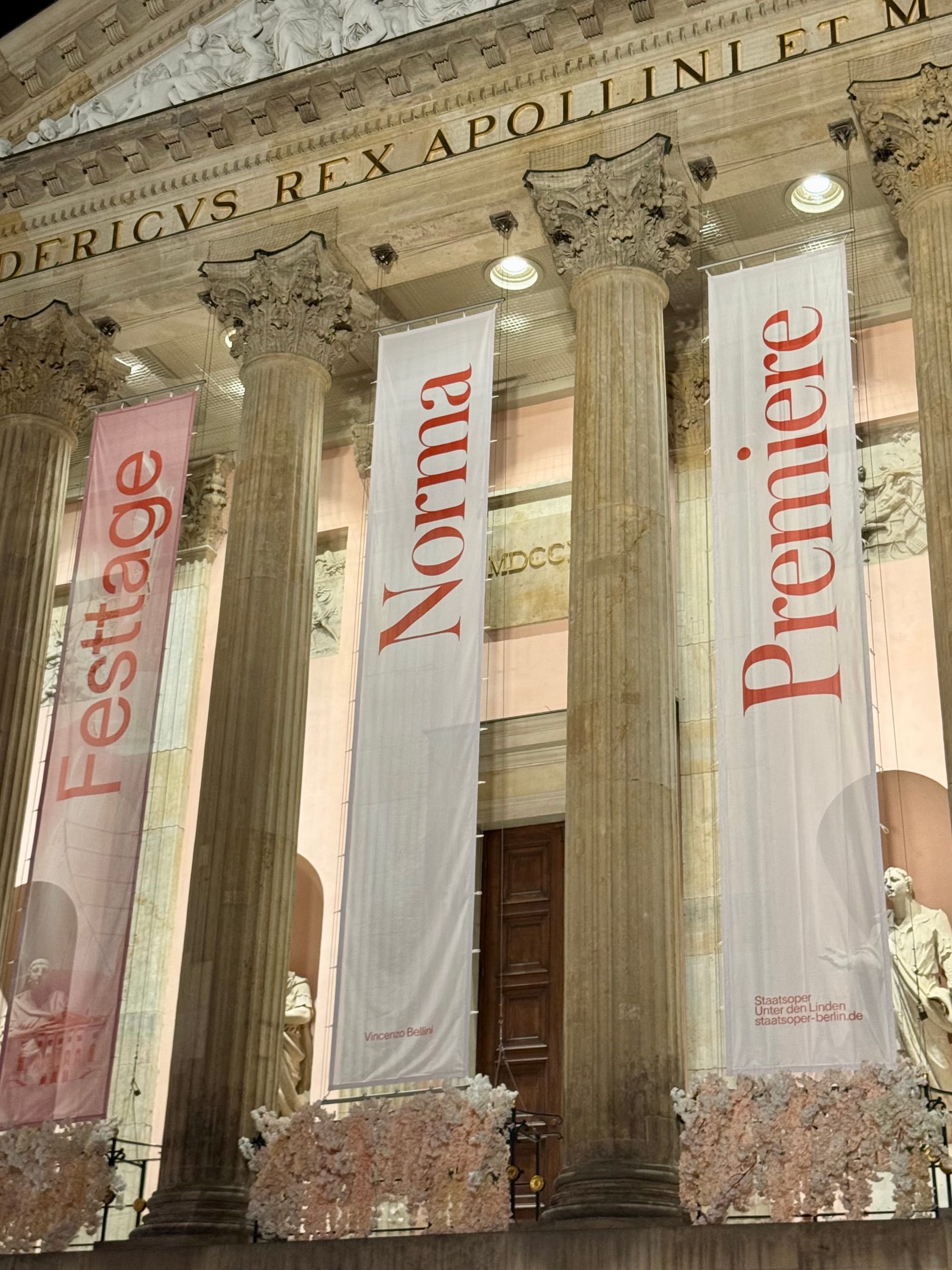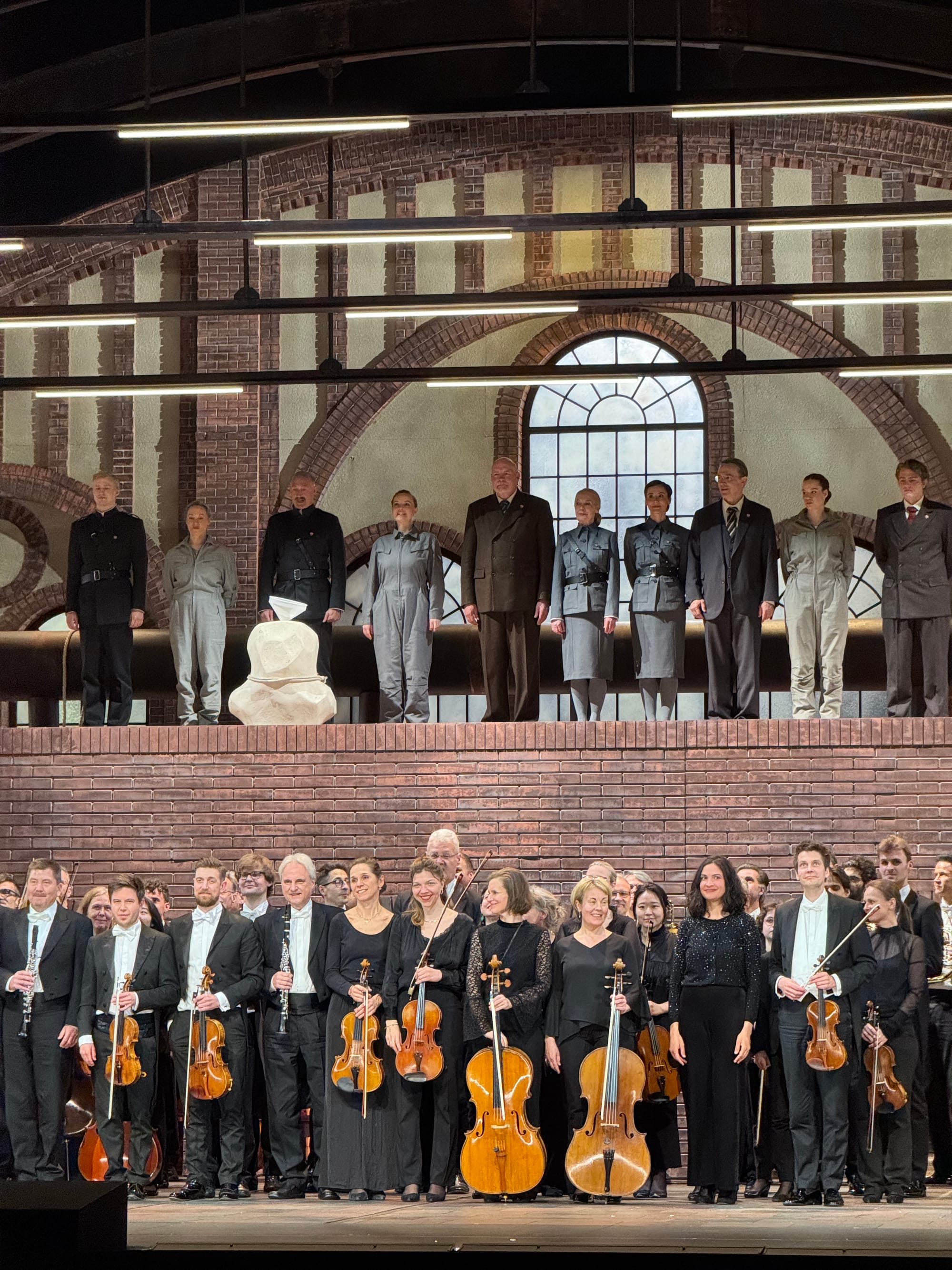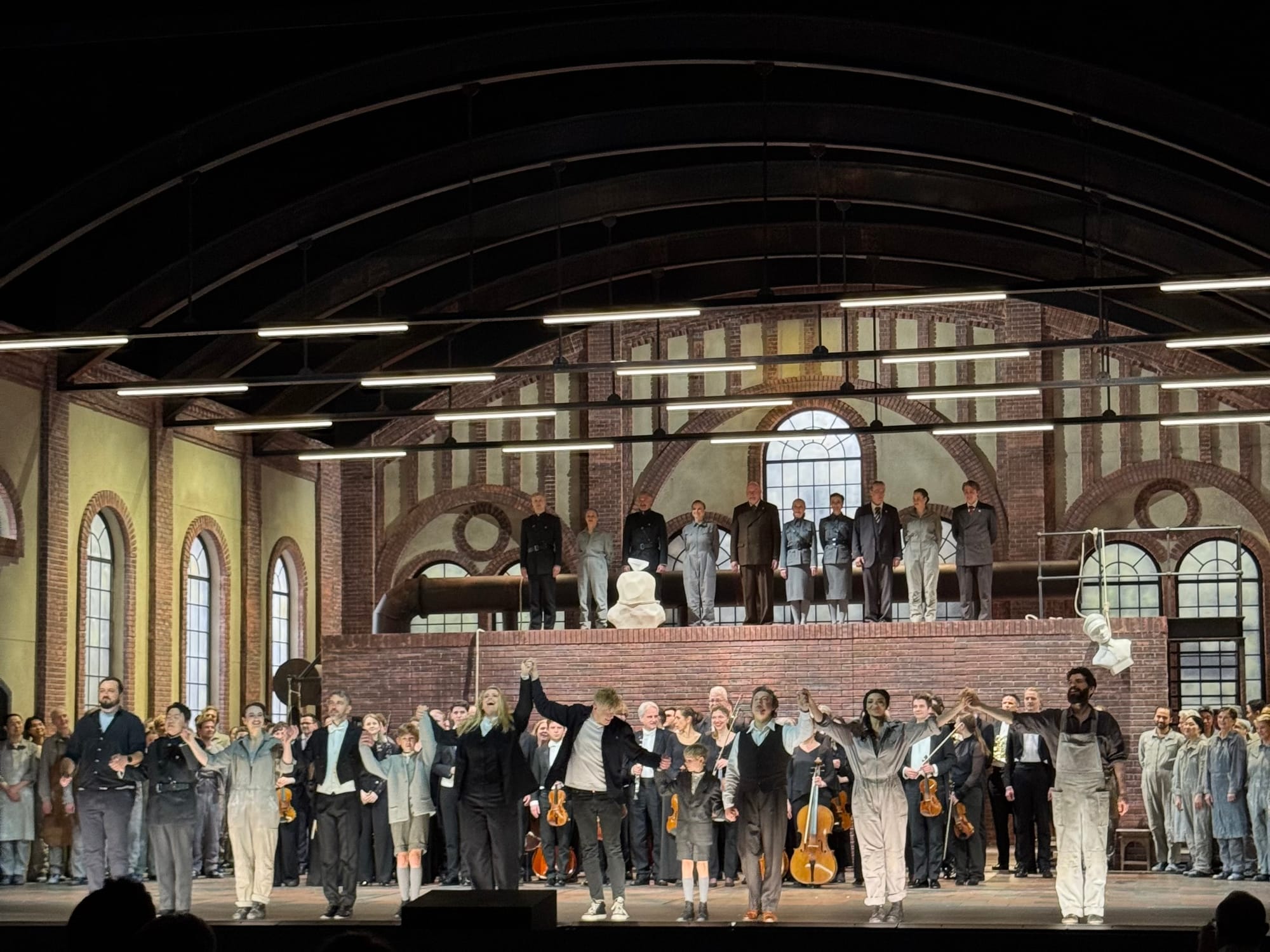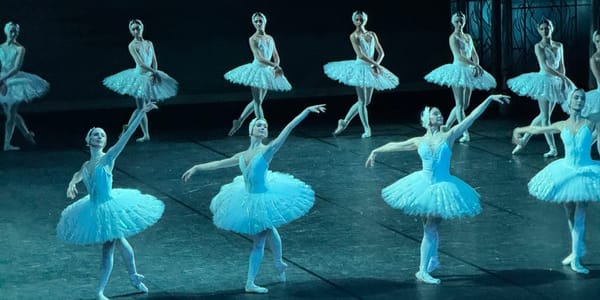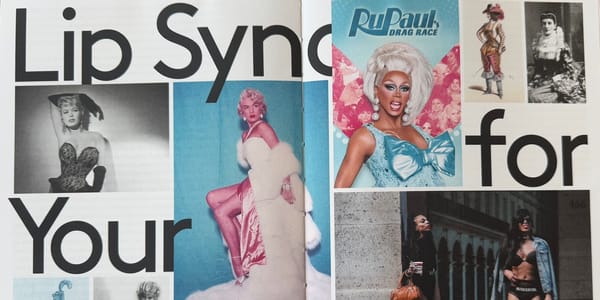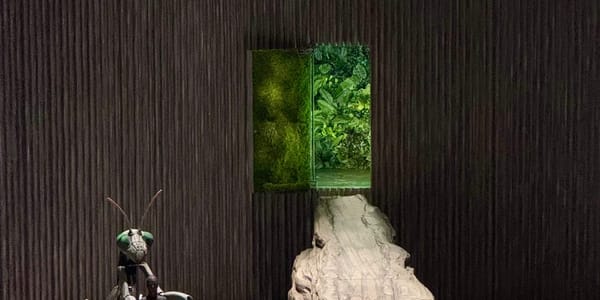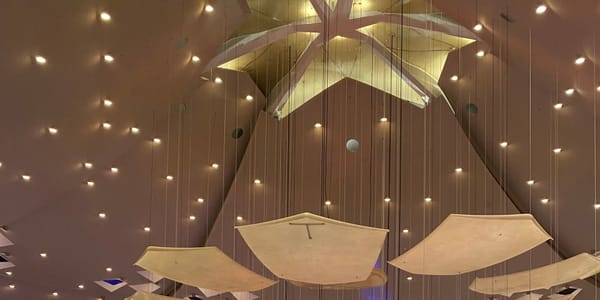Premiere of Norma at Staatsoper Berlin
A chilling new Norma at Staatsoper Berlin sets Bellini’s classic in a fascist-era factory, exploring art, resistance, and power. With AI-generated imagery and bold visuals, Barkhatov’s staging draws urgent parallels between past authoritarianism and today’s crises.
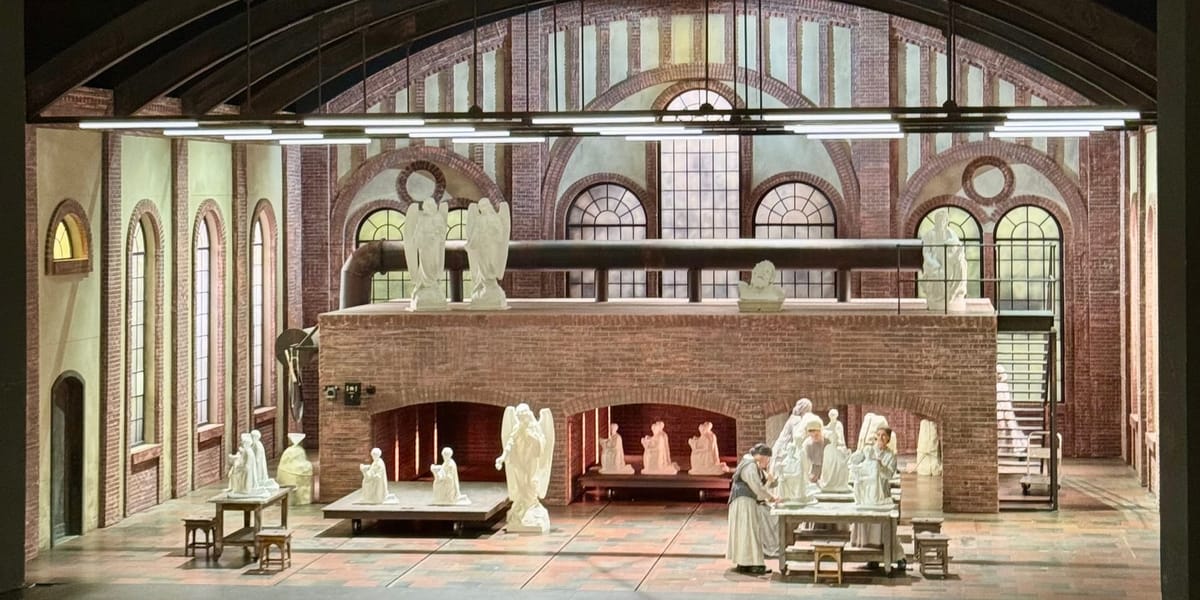
🎭 Norma
🎶 Vincenzo Bellini, 1831
💭 Vasily Barkhatov, 2025
🏛️ Staatsoper Berlin
🗓️ 13.04.2025
“I WANT TO CLEAR THIS POLLUTED AIR OF MY PRESENCE”
In Vasily Barkhatov’s bold new staging of Bellini’s NORMA, the ancient story of Gallic resistance under Roman occupation is transposed to a 20th-century ceramics factory under fascist control. Premiering at Staatsoper Berlin on April 13, 2025, in co-production with the MusikTheater an der Wien, the production offers a chilling portrayal of a society reshaped by authoritarianism. Through the shifting dynamics within the factory and the surrounding workers’ dormitories, we witness the ways in which interpersonal relationships are warped by fear, control, and ideology.
The factory as stage for fascism
Even before the overture ebegins, the production sets its tone. As the audience settles in, the curtain is already up. Women work meticulously on ceramics of various forms, the quiet clinking of their tools establishing an atmosphere of routine. But an unsettling commotion builds from outside the factory. Shouts and boots echo closer until soldiers storm the space, smashing ceramics, unfurling banners, and violently asserting their control. The curtain falls. The overture begins. And when it rises again, we have jumped forward ten years into a new social reality dominated by fascism.
I use the term "fascism" deliberately here, rather than simply "authoritarianism" or "dictatorship." While we only glimpse this regime through the microcosm of the ceramics factory and adjacent dormitories, its influence extends into every aspect of life: economic, cultural, and deeply personal. The factory, once a place of creative labor, has been transformed into a site of ideological mass production. Busts of the regime leader are churned out in endless repetition, and the space has been stripped of individuality. Fear permeates the production: surveillance seems omnipresent, characters glance over their shoulders, lower their voices. During a ritual led by Norma, the portrait of the regime leader is turned to face the wall, as if even an image might report what it sees. The fear of punishment is inescapable, echoing through hallways, lingering on the factory floor.
Barkhatov's staging uses a distinct visual language that borrows heavily from European fascist aesthetics of the 1930s and '40s. The costuming, flags, and political symbols evoke regimes from Imperial Japan to Nazi Germany, grounding this fictional regime in a disturbingly familiar iconography. The leader’s portrait is particularly provocative—created using generative AI to blend features of actual historical strongmen, it hovers unsettlingly over the characters and the audience alike. This marks one of the first explicit uses of generative AI on an opera stage that I’ve witnessed, signaling how deeply the technology has entered public consciousness. It also raises difficult ethical questions about AI’s role in art, in cultural memory, and in resistance to tyranny.
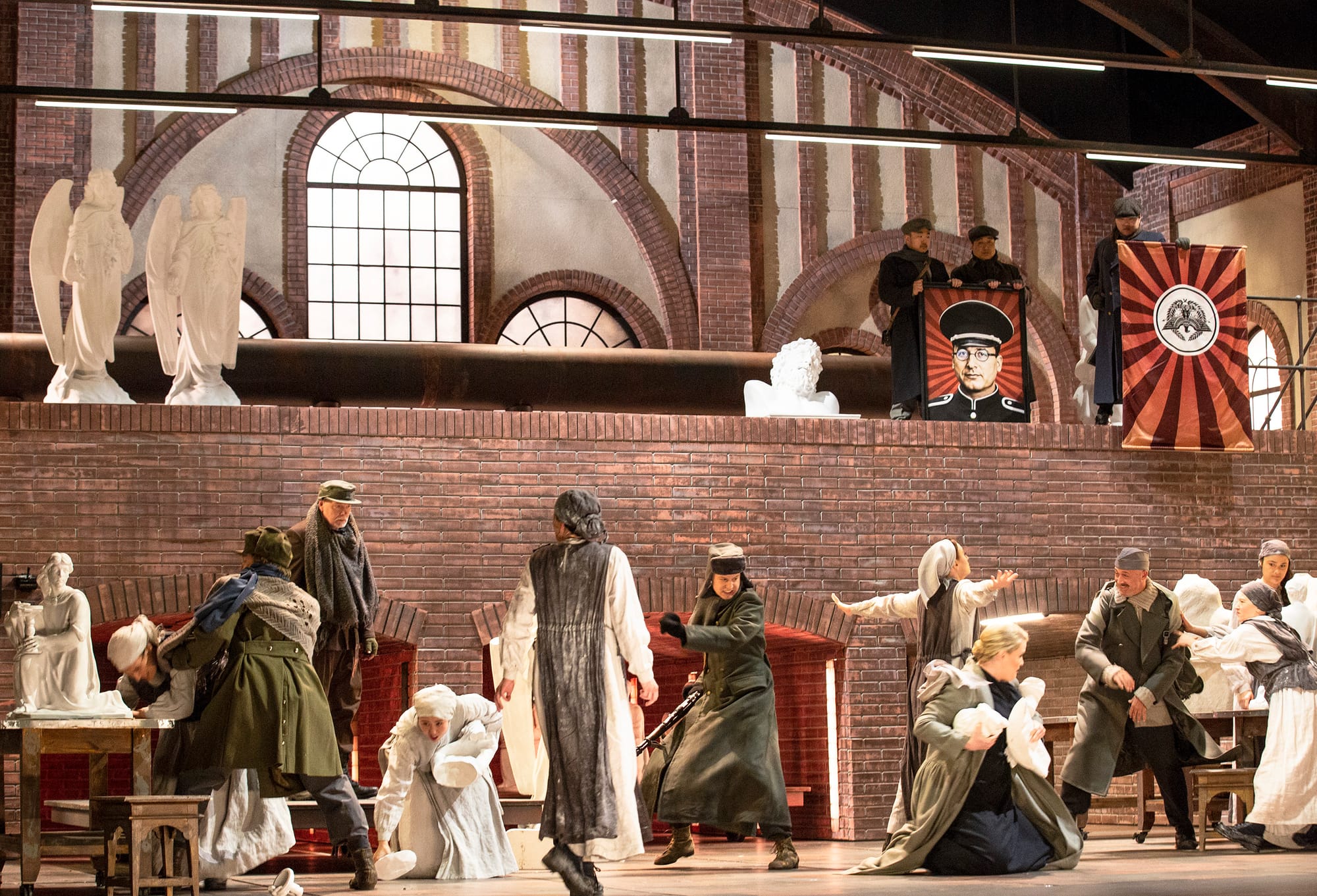
Norma's dilemma in a new context
At the heart of NORMA lies a profound emotional and moral conflict: the titular character is torn between her public duty as the leader of an oppressed community and her private life as a mother and partner. Barkhatov's contextual shift to a fascist regime magnifies this tension, placing Norma in an environment where personal choice and public responsibility are not just in conflict—they are fundamentally incompatible.
In Bellini's original, Norma is a druid priestess whose role demands piety, unity, and long-term vision for her people. Her secret family with Pollione, a Roman official, stands in direct contrast to these duties. In this production, the opposition is even more visceral. Norma is not only a spiritual leader but a symbolic figure of resistance, and Pollione is not just a foreign occupier, but a direct enforcer of fascist control. Their children, born of both worlds, would be socially ostracized by both communities if their existence became public knowledge.
Norma's actions are shaped by this impossible situation. She oscillates between leading a rebellion and protecting her children, between defying the regime and preserving what little she has left. Ultimately, her decisions reflect the weight of personal trauma and emotional exhaustion rather than revolutionary conviction. It is here that Barkhatov draws a compelling connection to Hannah Arendt's writings on totalitarianism politics and personal responsiblity: Norma’s moral failure—placing personal attachments above collective liberation—becomes a meditation on complicity and the crushing weight of moral ambiguity in authoritarian systems.

A visually captivating, yet uneven arc
The production begins with undeniable intensity. Its sociopolitical framing is clear, the visual and thematic world fully realized. However, this momentum falters somewhat in the second act. Part of the dip may be attributed to the original storyline itself, which becomes increasingly convoluted, with the musical structure of the piece in a way forcing a Belcanto corset onto the plot. But Barkhatov's staging, while visually rich, also contributes to the slowdown. Scene changes are frequent and sometimes sluggish; at one point, the transition passed without any scenic applause, a sign of the audience’s uncertain engagement.
Certain directorial choices were met with audible skepticism. Norma and Pollione sharing a cigarette in the middle of a heated emotional confrontation prompted scoffs from nearby audience members. Similarly, the mechanics used to move the ceramic platforms into kilns were too slow to register dramatically from the orchestra stalls. What should have been ominous moments of industrial sacrifice came across more as technical curiosities.
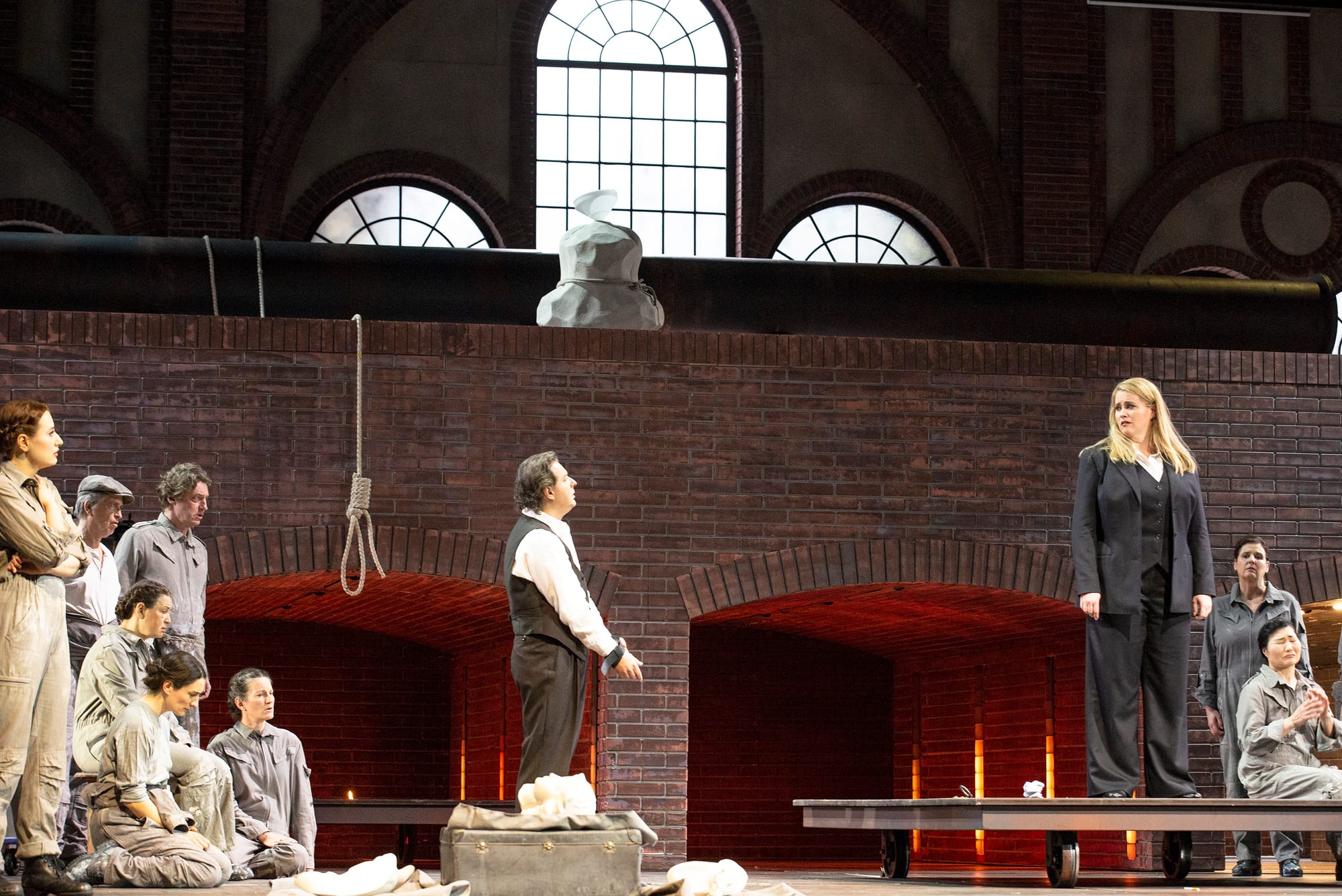
A musical triumph
Despite these staging issues, the musical dimension of the production soared. A phenomenal cast and the Staatskapelle Berlin delivered a deeply affecting performance. Vocally, the production was a tour de force, each aria charged with emotion and dramatic intensity. The final scenes, though convoluted in plot, landed with shocking power that left the audience stunned.
A particularly bold directorial decision came at the opera's end. Rather than dying in the flames as in the original libretto, Norma is rescued by Pollione in the final moments. A scuffle ensues, culminating in the two embracing in pain and exhaustion. The audience is left without resolution, forced to interpret the meaning and morality of their survival. This ambiguity requires active reflection and may explain some of the production's mixed reception. In a way, this ambivalence mirrors the psychological terrain of living under fascism: unclear endings, unresolved guilt, and uncertain futures.
The applause was enthusiastic for the music, yet more critical of the staging. This isn’t initially surprising—a premiere can never satisfies every audience member equally. But it is worth speculating why this production provoked discomfort. One reason might be the unresolved nature of the ending; another, the heavy symbolism; and a third, perhaps the most pressing, is the visual and thematic proximity to Germany's own fascist past.
German public discourse remains uncomfortable with direct representations of fascism, especially when linked to contemporary dynamics in society and politics. While consensus holds that historical fascism was undoubtably evil, confronting the resurgence of nationalist, racist, and anti-democratic ideologies today is a more contentious endeavor. This production does not allow for easy historical distancing. It forces audiences to consider the relevance of fascism here and now, and that provocation may well be the source of its greatest resistance.
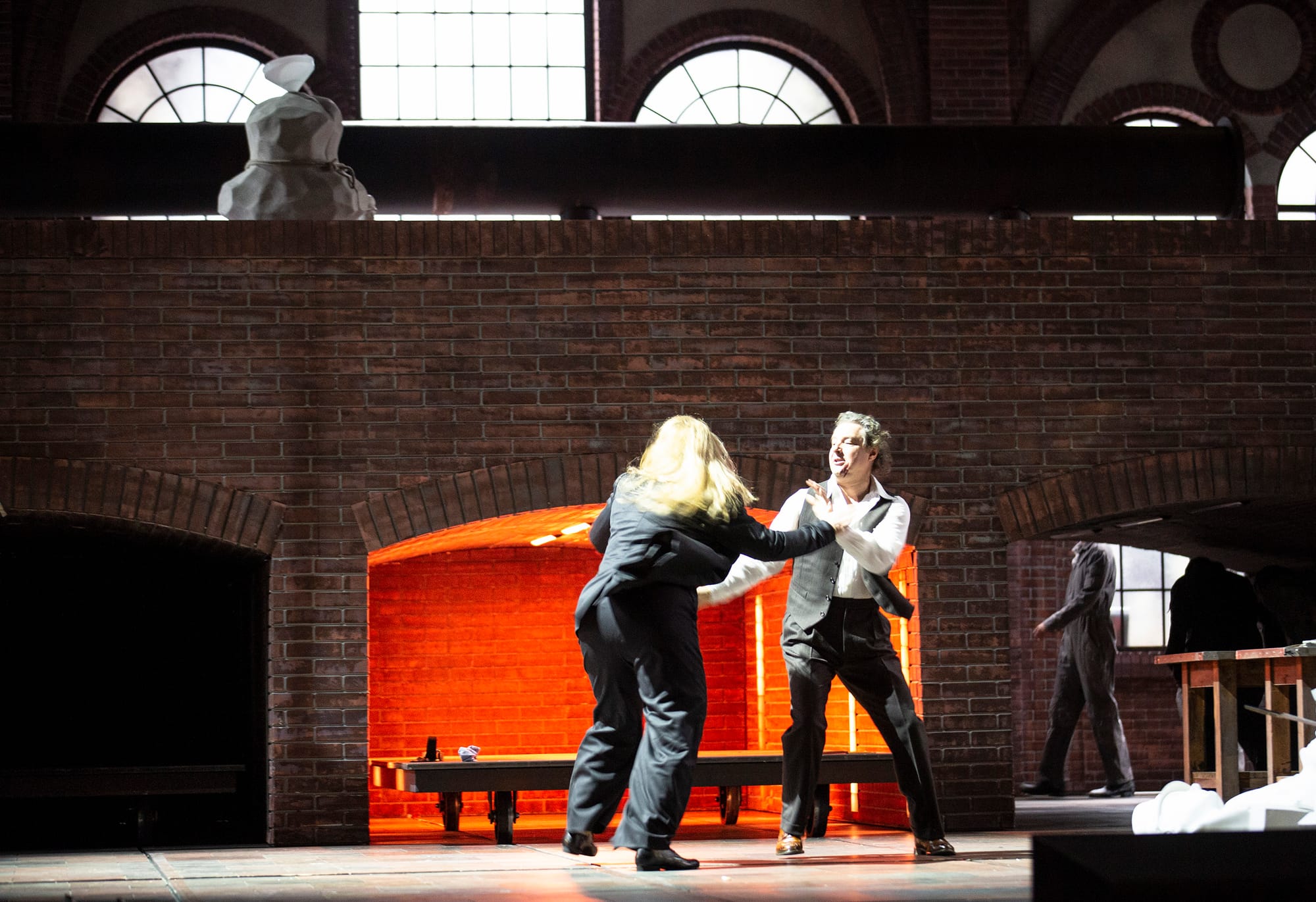
Historical roots and contemporary resonance
It is important to remember that NORMA has always carried political subtext. Bellini and his librettist Felice Romani composed the opera in 1831, during a time when much of Italy was under foreign rule. The opera offered audiences an emotionally resonant framework to grapple with questions of identity, resistance, and national unity. Milan, where NORMA premiered, was under Austrian control at the time. It’s not difficult to imagine how the opera’s themes of occupation and betrayal struck a chord with early audiences.
Barkhatov’s decision to root this NORMA in 20th-century fascism draws a powerful parallel between that historical context and our own. Today, democratic institutions are under threat in many parts of the world. Post-fascist, oligarchic, and right-wing authoritarian movements are increasingly undermining the norms and foundations of liberal democracy. Though this framing may be controversial in mainstream discourse, political science increasingly acknowledges the rise of neo-fascist tendencies in the 21st century.
The production walks a delicate line. On one hand, it historicizes fascism through its visual references to 1930s and '40s Europe. On the other, it challenges us to recognize these dynamics in the present. Barkhatov's use of generative AI adds another layer of contemporary anxiety—the portrait of the dictator is not simply a nod to the past, but a glimpse into a future where control and surveillance are encoded into the very tools of artistic production.
Final outlook: A provocation worth sitting with
This NORMA is not an easy night at the opera. It doesn't comfort or flatter the audience. Instead, it confronts. Through its striking imagery, thematic weight, and musical excellence, it forces a reckoning with our political moment. It asks how individuals navigate regimes of control, and what role art plays in naming and resisting such regimes.
For those willing to sit with discomfort, this NORMA offers a deeply rewarding experience. It may not satisfy traditionalists or those seeking narrative clarity, but it unquestionably asserts opera's power to provoke, to reflect, and to disturb. Barkhatov's production doesn’t just modernize NORMA; it revives it—as a political act, a historical echo, and a warning of what’s to come.
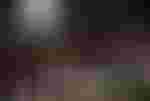
Cast
Musical Director: Francesco Lanzillotta
Director: Vasily Barkhatov
Assistant director: José Darío Innella, Marcin Łakomicki
Set Design: Zinovy Margolin
Costumes: Olga Shaishmelashvili
Light: Alexander Sivaev
Fight choreography: Ran Arthur Braun
Chorus Master: Dani Juris
Dramaturgy: Kai Weßler, Christoph Lang
Norma: Rachel Willis-Sørensen
Pollione: Dmitry Korchak
Adalgisa: Elmina Hasan
Oroveso: Riccardo Fassi
Clotilde: Maria Kokareva
Flavio: Junho Hwang
Staatsopernchor, Staatskapelle Berlin
